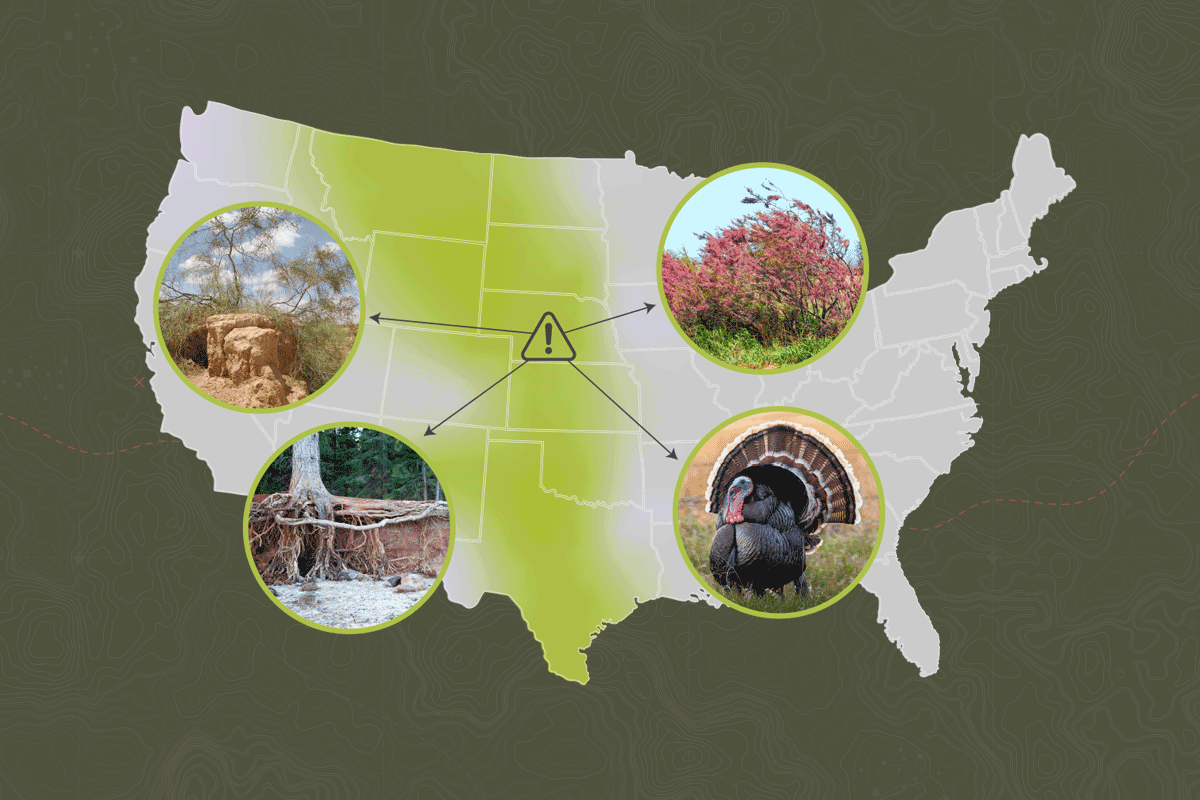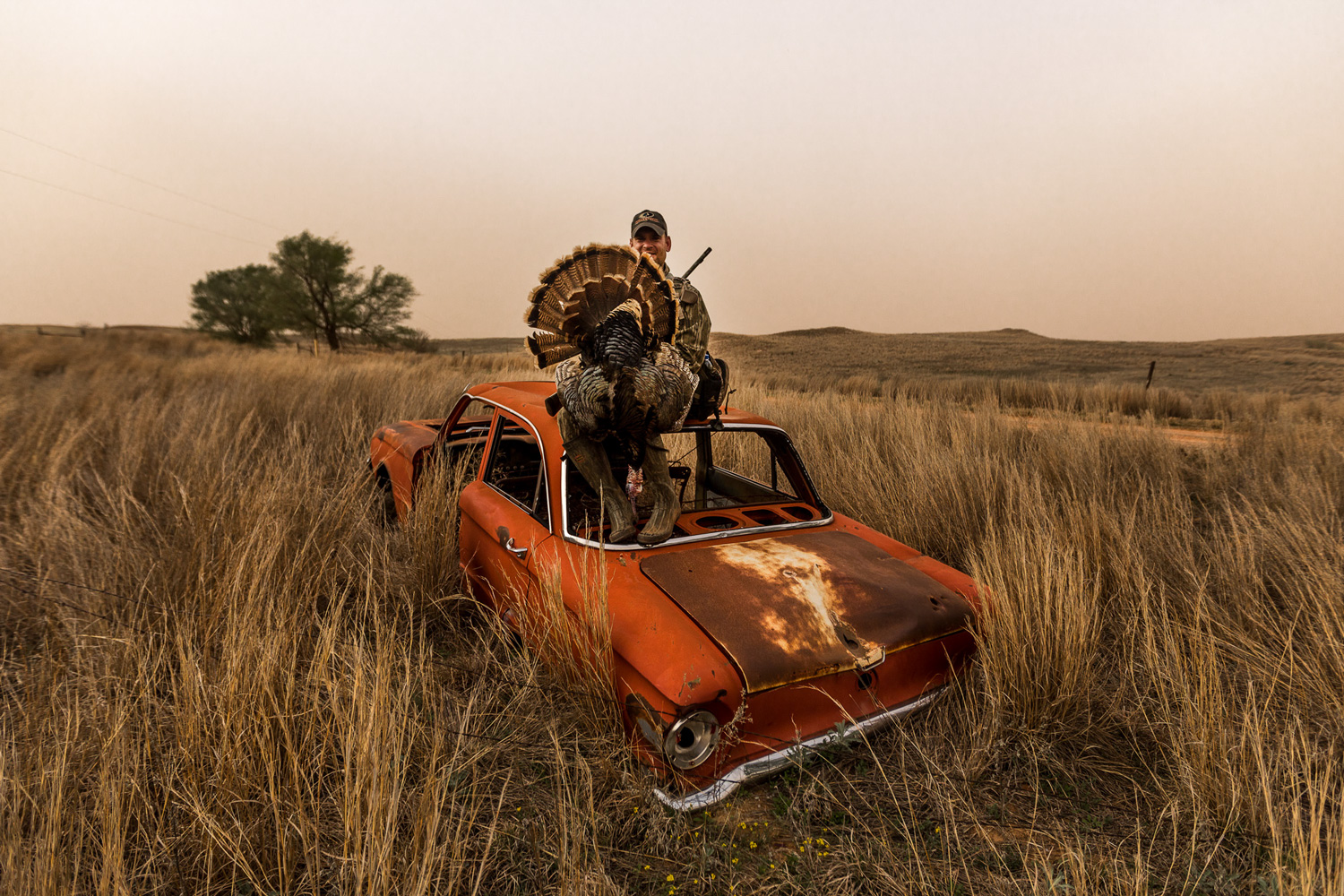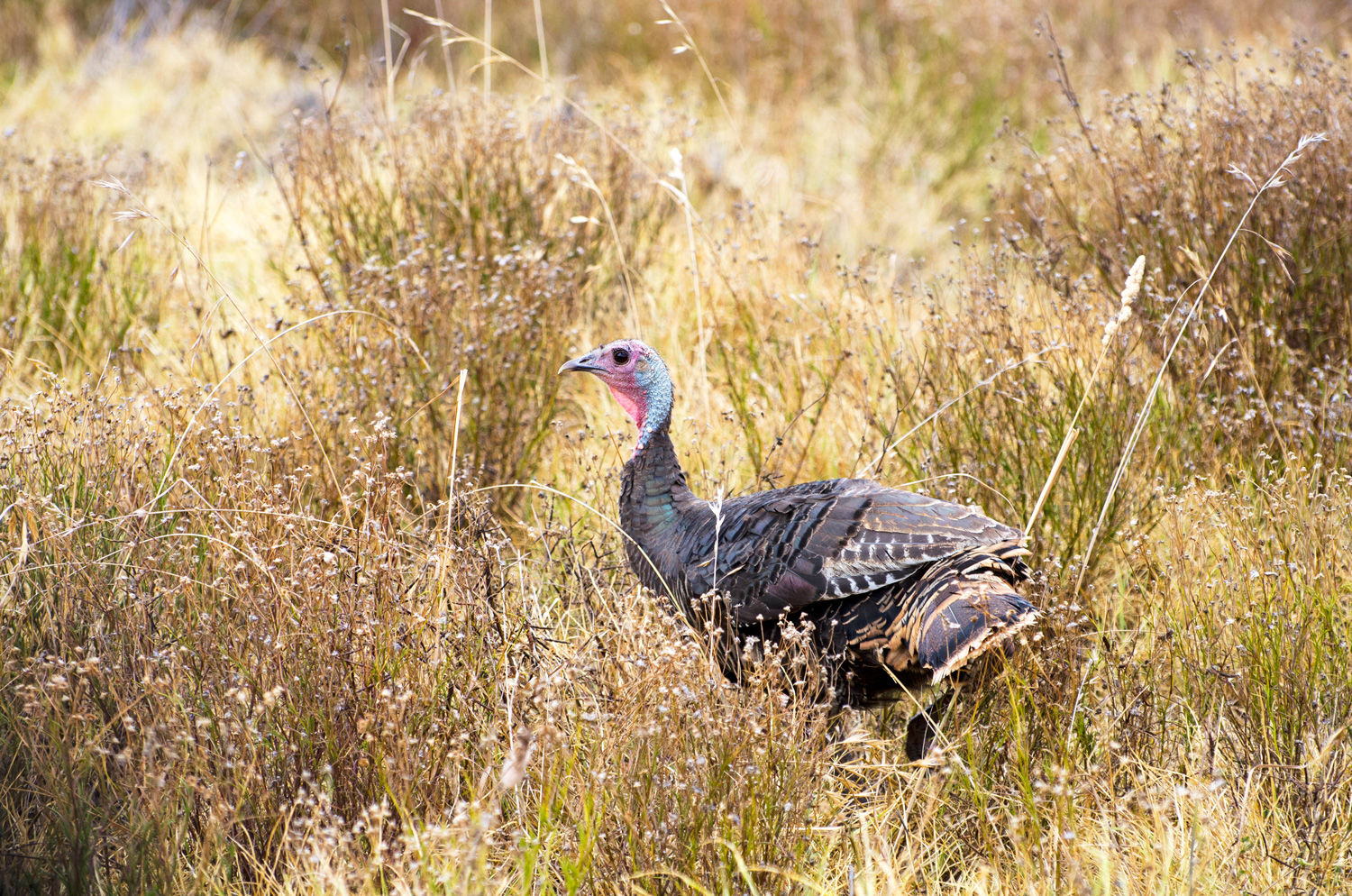America's Great Open Spaces
It’s where the storied amber waves of grain ripple from the winds of the Western Plains.
An Overview
States in the Great Open Spaces include: Texas, New Mexico, Colorado, Oklahoma, Kansas, Nebraska, Wyoming, North Dakota, South Dakota and Montana.
NWTF’s Great Open Spaces is where the storied amber waves of grain ripple from the winds of the western Plains; where bluebonnets dot Texas Hill Country and where aspens gently sway on mountainsides. It’s these spaces where wildlife and the people who enjoy them are meant to roam.
While our Great Open Spaces are filled with great turkey country and some of the best opportunities in the nation for outdoorsmen and women, there are conservation needs that must be addressed.
Water corridors are suffering from an influx of invasive species. Salt cedar and Russian olives are choking out trees like cottonwoods that are indicators of healthy waterways. Native prairies also are being overtaken by unwelcome plant species. Couple that with unmanaged grazing and cropland conversion and the world’s last remaining tallgrass prairie could fade into history. Forests that dot the Great Plains are becoming less diverse, which means we’re losing quality habitat for turkeys and many other wildlife species. We’re battling invasive species such as honeysuckle and garlic mustard, which are pushing out native plants that keep our forests healthy.
Luckily, much of the work the NWTF is doing to conserve wild turkeys is addressing these pressing conservation issues. NWTF volunteers, wildlife biologists, foresters and partners have joined forces to actively manage forests and prairies for the betterment of wildlife and the greater outdoors community.
Thinnings, prescribed fires, tree planting and an array of management techniques the NWTF is implementing and funding will keep these habitats healthy and diverse. The NWTF is fighting the war against invasive plants and restoring native species like cottonwoods, thus restoring healthier waterways. We’ll help balance land use to keep it productive for farming but still valuable for wild species. The NWTF is tackling these issues on both a regional and landscape scale.
The NWTF is collaborating with an array of partners on a variety of projects that will ensure the wild places in NWTF’s Great Open Spaces stay wild and continue to provide great habitat.
Regional projects include the work NWTF state chapters fund through the NWTF Super Fund. Super Fund dollars are raised by NWTF local chapters to benefit projects in their respective states. Projects like this include creating wildlife openings on WMAs, improving access areas or creating early successional habitat in national forests, among a myriad of others.
The NWTF has created a handful of landscape-level initiatives across the country that address specific issues of concern and incorporate an array of traditional and nontraditional partners, agencies and interested parties. These groups combine resources, funding and expertise that ultimately benefits the wildlife, forests, private lands and wetlands on an entire landscape.
NWTF’s Great Open Spaces is involved in multiple landscape-scale initiatives, including the National Forestry Initiative, Northern Plains Riparian Initiative, Longleaf Restoration Initiative, Rocky Mountain Restoration Initiative, Shortleaf Pine Initiative, White Oak Initiative, and the forthcoming Waterways for Wildlife Initiative.
Your Support Makes a Difference.


